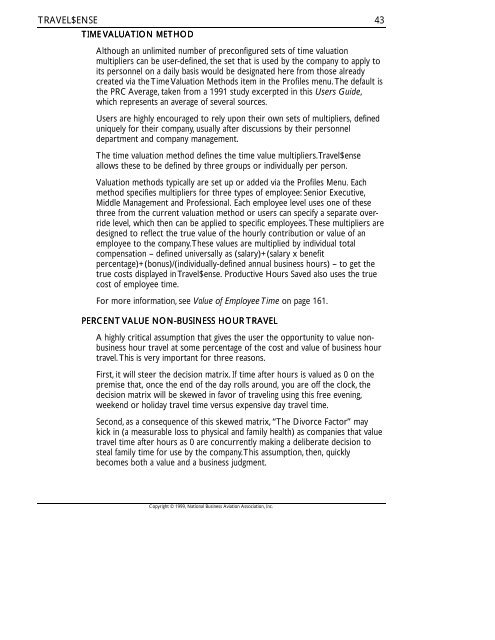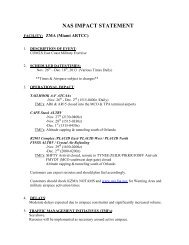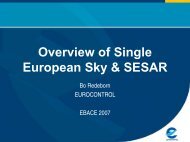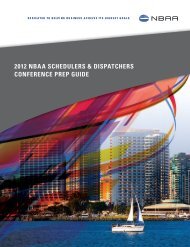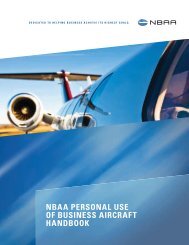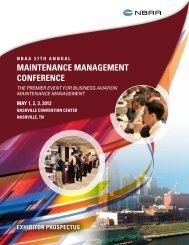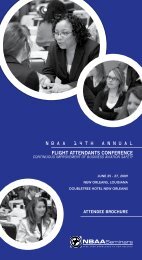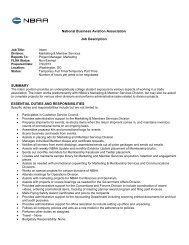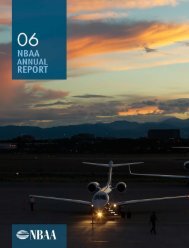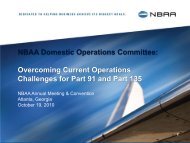Travel$ense User's Guide (PDF, 139 MB) - NBAA
Travel$ense User's Guide (PDF, 139 MB) - NBAA
Travel$ense User's Guide (PDF, 139 MB) - NBAA
- No tags were found...
Create successful ePaper yourself
Turn your PDF publications into a flip-book with our unique Google optimized e-Paper software.
TRAVEL$ENSETIME VALUATION METHOD43Although an unlimited number of preconfigured sets of time valuationmultipliers can be user-defined, the set that is used by the company to apply toits personnel on a daily basis would be designated here from those alreadycreated via the Time Valuation Methods item in the Profiles menu. The default isthe PRC Average, taken from a 1991 study excerpted in this Users <strong>Guide</strong>,which represents an average of several sources.Users are highly encouraged to rely upon their own sets of multipliers, defineduniquely for their company, usually after discussions by their personneldepartment and company management.The time valuation method defines the time value multipliers. <strong>Travel$ense</strong>allows these to be defined by three groups or individually per person.Valuation methods typically are set up or added via the Profiles Menu. Eachmethod specifies multipliers for three types of employee: Senior Executive,Middle Management and Professional. Each employee level uses one of thesethree from the current valuation method or users can specify a separate overridelevel, which then can be applied to specific employees. These multipliers aredesigned to reflect the true value of the hourly contribution or value of anemployee to the company. These values are multiplied by individual totalcompensation – defined universally as (salary)+(salary x benefitpercentage)+(bonus)/(individually-defined annual business hours) – to get thetrue costs displayed in <strong>Travel$ense</strong>. Productive Hours Saved also uses the truecost of employee time.For more information, see Value of Employee Time on page 161.PERCENT VALUE NON-BUSINESS HOUR TRAVELA highly critical assumption that gives the user the opportunity to value nonbusinesshour travel at some percentage of the cost and value of business hourtravel. This is very important for three reasons.First, it will steer the decision matrix. If time after hours is valued as 0 on thepremise that, once the end of the day rolls around, you are off the clock, thedecision matrix will be skewed in favor of traveling using this free evening,weekend or holiday travel time versus expensive day travel time.Second, as a consequence of this skewed matrix, “The Divorce Factor” maykick in (a measurable loss to physical and family health) as companies that valuetravel time after hours as 0 are concurrently making a deliberate decision tosteal family time for use by the company. This assumption, then, quicklybecomes both a value and a business judgment.Copyright © 1999, National Business Aviation Association, Inc.


